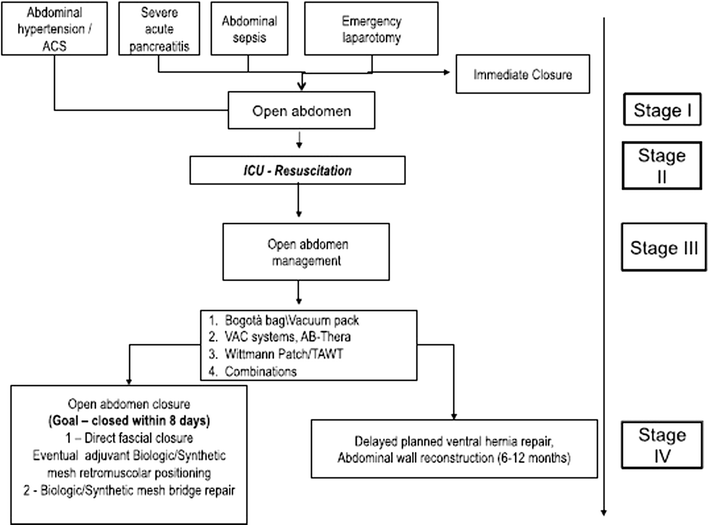Wittmann Patch Abdominal Closure
- 1 Comments!

Since the late 1980's the concept of damage control laparotomy has emerged as a mainstay in the armamentarium of the trauma surgeon. In order to avoid the letha triad of hypothermia, coagulopathy, and metabolic acidosis; operations have been abruptly terminated after control of hemorrhage. Methods for temporary abdominal closure have subsequently evolved. This temporary abdominal closure technique employs a Velcro like material that is sutured to the fascia of the abdominal wall. This method allows for reexploration of the abdomen as well as slow re-approximation of the abdominal wall over a period of days.
Temporary Abdominal Closure Techniques: The Wittmann Patch. This method allows for reexploration of the abdomen as well as slow re-approximation of the. Wittmann Patch. The Wittmann Patch (STARSURGICAL, Inc., Burlington, WI) was designed to allow adjustment in the laxity or redundancy of the closure material to accommodate changes in intra-abdominal pressure and prevent abdominal compartment syndrome.
This makes if possible to perform a delayed primary closure of the fascia. Drajver zvukovoj karti yamaha ymf724 w 9. Trauma patients that once may have gone on to develop ventral hernieas with other temporary closure modalities are now able to be closed primarily.

Open abdomen (OA) has been an effective treatment for abdominal catastrophes in traumatic and general surgery. However, management of patients with OA remains a formidable task for surgeons. The central goal of OA is closure of fascial defect as early as is clinically feasible without precipitating abdominal compartment syndrome. Historically, techniques such as packing, mesh, and vacuum-assisted closure have been developed to assist temporary abdominal closure, and techniques such as components separation, mesh-mediated traction, bridging fascial defect with permanent synthetic mesh, or biologic mesh have also been attempted to achieve early primary fascial closure, either alone or in combined use. The objective of this review is to present the challenges of these techniques for OA with a goal of early primary fascial closure, when the patient's physiological condition allows. Introduction Direct pressure has long been used until World War II for hemostasis, especially in patients with coagulopathy. It was abandoned because of recurrent bleeding at pack removal and late infection.
In a prospective study carried out from 1968 to 1973, Lucas and Ledgerwood [] reintroduced the technique and used it on 3 patients in a series of 637 patients with liver injuries. The authors emphasized “open-mindedness and flexibility” in the use of packing. Subsequently, other authors reported on packing for severe liver injuries [, ]. As the number of patients in these series was small (4 and 17 patients), the idea of packing was still not considered as a desirable and standard practice then [, ]. In 1983, Stone et al.
[] reported their experience on 31 patients who were diagnosed to have major coagulopathy soon after the onset of surgery. In the first 14 patients, the procedure was continued with hemostatic replacement and completion of the operation. The mortality was 93% []. In the subsequent 17 patients, the operation was aborted and abdominal tamponade was achieved with sponges.